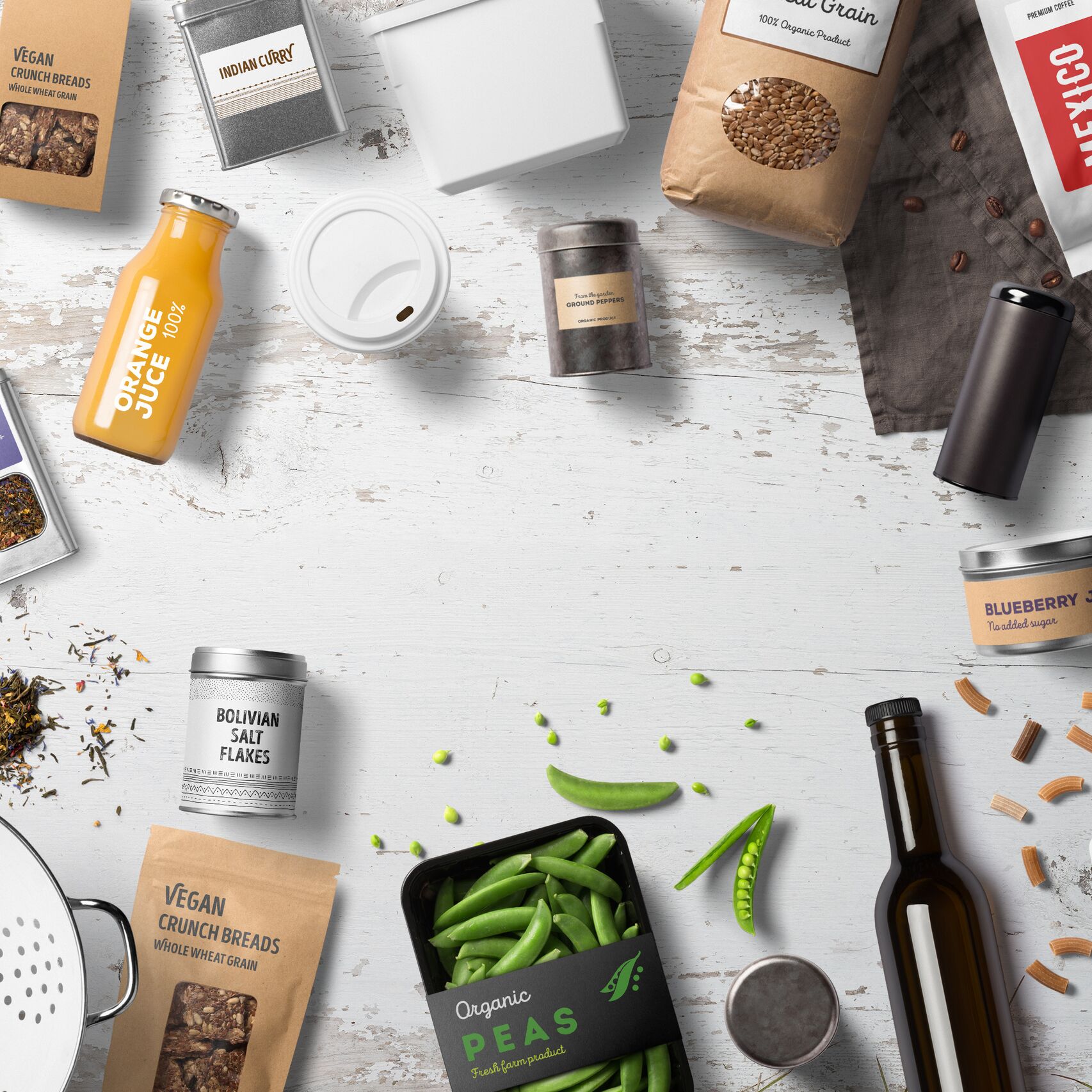Sustainable Processing and Packaging
Your Knowledge Portal for Sustainable Processing and Packaging Technologies

With the Sustainable Processing and Packaging initiative, the VDMA wants to make a contribution to objectifying the discussion about packaging. In addition, we would like to highlight the many facets of sustainability, in both processing and packaging technology.

shutterstock
Compact knowledge
Whether circular economy, function and value of packaging, relevant laws and regulations, infographics, expert interviews and company examples:
In this knowledge portal, we have taken a holistic look at data, facts, and background information on sustainable process and packaging technology for you, prepared it objectively, and bundled it compactly into one information source.


The global food and beverage industry is one of the most dynamic growth sectors. Plastic dominates sales of retail packaging for food and beverages.
Carelessly discarded packaging pollutes oceans and landscapes worldwide. The images of environmental pollution are well known and the need for action is great. Every individual bears responsibility.
Consumers consider paper/cardboard packaging to be sustainable and the trend is moving towards fiber-based packaging. Flexible paper packaging is experiencing a renaissance.
Paper is a classic packaging material made from fibers. A distinction is made between primary and secondary fibers made from wood or waste paper. This article provides information on the various stages of paper production.
Cardboard packaging is stable and protects against mechanical stress. It is used as product packaging, outer packaging and transport packaging. Here you can find out everything about the production and use of cardboard and corrugated cardboard.
Which packaging is more sustainable, paper or plastic packaging? We have compiled some of the most frequently asked questions in FAQs, which we offer VDMA members exclusively for download.
Plastic packaging usually consists of composite films that are difficult to recycle. Legislation therefore requires materials and combinations that enable a high recycling rate.
Plastics are very versatile due to their properties. Read on to find out how plastics are made, what types there are, what the most common packaging plastics are and the selection criteria.
Focus on the circular economy: countries around the world are enacting regulations on packaging and waste in order to reduce environmental pollution. The overview "Regulations on packaging and packaging waste" shows current and planned measures. Download now!
Which packaging is more sustainable, paper or plastic packaging? There is no general answer to this question, as it depends on the product to be packaged and the resulting requirements.
Optimized packaging design and innovative processing techniques have led to packaging becoming lighter and lighter over the years, with the same or better packaging performance and stability.
Food and packaging machinery plays a crucial role in reducing food waste. Advanced processes in food processing and packaging extend shelf life and protect against spoilage.
A legal opinion commissioned by several associations on the legality of Article 29 (1-3) of the PPWR revealed several concerns.
New: Data collection on packaging not subject to system participation. The amended Environmental Statistics Act came into force on 16.05.2024, which will also be used to collect data on packaging not subject to system participation from June 2024.
EU Environment Commissioner Virginijus Sinkevičius announces action on reusable transport packaging quota.
From 01.05.2025, packaging licensing in Spain will be extended to industrial packaging. This also applies to transport packaging for machine deliveries.
On December 18, 2023, the EU Council reached an agreement ("general approach") on the proposal for the EU Packaging Regulation, after the EU Parliament had already approved its position on the document on November 22, 2023.
On 05 June 2023, the EU Commission presented plans against food waste with the revision of the EU Waste Framework Directive (2018/851/EC).
EU Regulation 2022/1616 on recycled plastic materials and articles intended to come into contact with food came into force on October 10, 2022, replacing the previously applicable EU Regulation 2008/282. The new regulation applies to all plastic types and recycling technologies.
The European Parliament and the Council adopted Directive 94/62/EC on packaging and packaging waste in 1994. Since then, it has been updated several times. The aim is to prevent packaging waste and to promote reuse, recycling and other forms of recovery of packaging waste.
In an interview at interpack, Vera Fritsche of the VDMA talks about why the EU has launched the new regulation, what its objectives are and when it is due to come into force.
In the VDMA Technology Lounge, innovations on sustainable packaging, digitalization, cleaning, product safety as well as on the topic "Save Food" against food waste will be presented on more than 300 sqm. To touch. To try out. And even to taste. A visit to the lounge thus becomes an experience.
Numerous bans are intended to reduce the amount of plastic packaging waste.
The French government has now set itself an ambitious target and intends to abolish all disposable plastic packaging by 2040.
The old industrialised countries export their waste plastic packaging to third countries and emerging markets for disposal or recycling. However, these do not have appropriate infrastructure and technologies for sustainable recycling. As a result, considerable quantities of this waste ultimately end up in the sea via the major river systems of these countries.
The aim of the Plastics Strategy is to use plastics according to the criteria "Reuse - Repair - Recycle". In addition to the recycling aspects, economic advantages such as growth and employment in Europe are to be developed.
With Active Packaging and Intelligent Packaging, the plastic packaging industry has two solutions at its disposal that help to reduce material usage and food losses.
Materials and articles intended to come into contact with food, as well as combinations of those materials and articles or recycled materials and articles used in those materials and articles, shall be manufactured in accordance with good manufacturing practice. Regulation (EC) No 2023/2006 lays down these rules.
Together with its members from companies, politics, associations and the media, Save Food [1] wants to drive innovation and create solutions to reduce food losses throughout the entire supply chain from field to consumer in dialogue with all stakeholders.
The aim of a recycling economy is not to dispose of the various materials as waste at the end of their useful life or service life, but to use them again as high-quality materials through intelligent processes. This saves energy and protects resources and the environment.
Today, more and more products are packed in plastic packaging of all kinds. But what happens after using the packaging. What quantities are generated in the EU28 and Germany and how are they recycled.
In June 2019, the European Parliament adopted Directive EU 2019/904. According to this directive, from 2021 onwards certain disposable plastic products may no longer be sold in the EU if affordable alternatives are available. The aim is to reduce consumption of the others.
Packaging is one of the most important keys to protecting food from premature spoilage and to supplying people around the world with high-quality food - whether in industrialized, emerging or developing countries.
With the increasing demand for food, beverages and other consumer goods, the flood of packaging and thus packaging waste is rising.
This infographic is available for download.
Resource efficiency is of great importance for the packaging industry. But what is meant by this and how are they determined?
How can we succeed in creating a circular economy for plastics? What opportunities does the packaging industry have? The initiatives for recycling management in the plastics packaging industry offer numerous impulses for improving the reuse of packaging.
What activities are undertaken to reduce plastic waste? One approach is the recycling and reuse of plastics, which is being pursued by some institutions.
Non-returnable or returnable packaging: why and for what purposes it is suitable and what to consider in the life cycle assessment.
The framework Regulation (EU) No 1935/2004 lays down the essential requirements for materials and articles intended to come into contact with food.
This infographics is available for download.
This infographic is available for download.
This infographic is available for download.
There is a minimum standard for measuring the recyclability of packaging subject to system participation. It provides manufacturers with orientation as to what recycling-friendly packaging design must look like.
Active and intelligent packaging helps to reduce food losses. They provide information on whether the cold chain has been maintained and also provide information on the quality status of the product. In Regulation (EC) No 450/2009 of 29 May 2009, the EU Commission defines the conditions that must be met in order to place active and intelligent materials and articles on the market.
Seaweed is suitable as a raw material for biodegradable packaging. At interpack, the processing from seaweed to cup will be demonstrated live.
In close cooperation with the Fraunhofer Institute for Process Engineering and Packaging (IVV), the Chair of Processing Machinery/Processing Technology at the Institute of Natural Materials Technology at the TU Dresden is working on the reduction to substitution of packaging materials of fossil origin.
At interpack, the Fraunhofer Institute for Process Engineering and Packaging IVV will present new technologies and solutions that enable companies in the packaging and food industries to realize digital value creation and enter the circular economy.
VDMA Packaging Machinery takes a look at alternatives to plastic and Styrofoam and where they are already being used.
On the FAQ pages we have summarized the most important questions & topics for you.
Here you will find data, facts and background information for sustainable process and packaging technology. Holistic. Factual. Compact. Stay informed!
Exclusively for VDMA members
Register now and read more
Don't have an account?
If your company is already a VDMA member, you can register easily.
Do you not know whether your company is already a member? Take a look at our member list and find out.
Are you interested in becoming a VDMA member?











